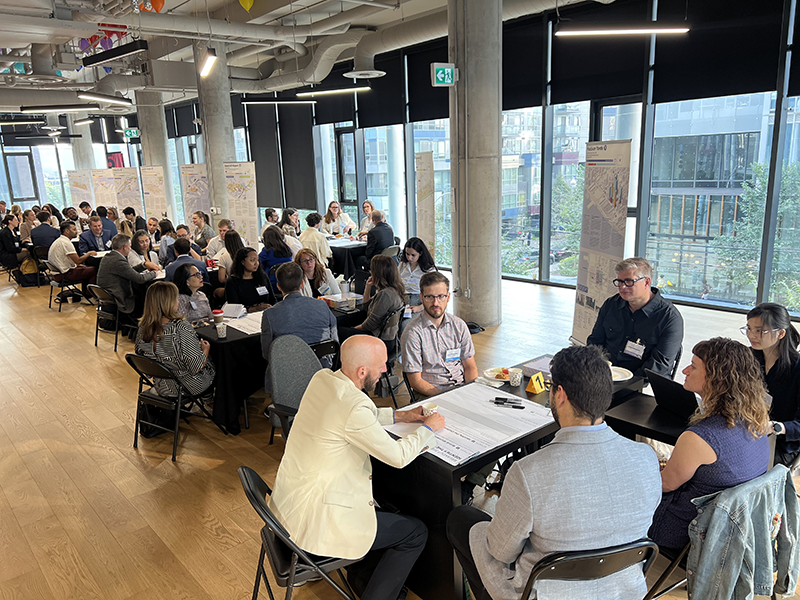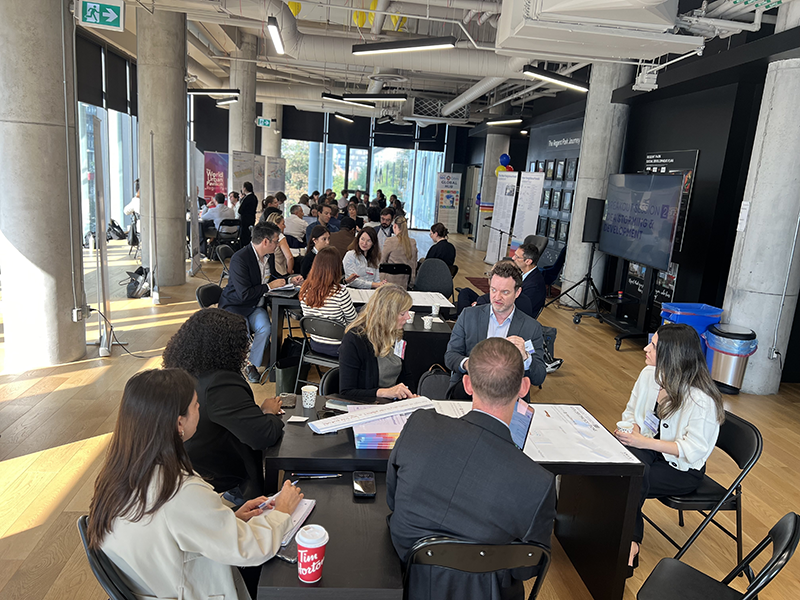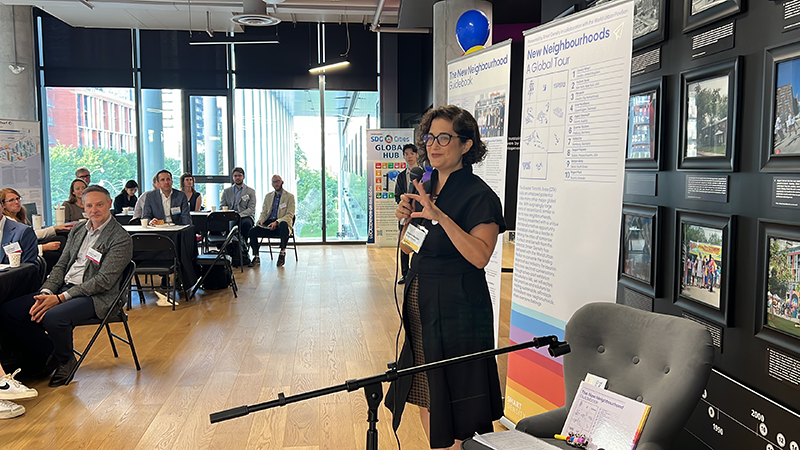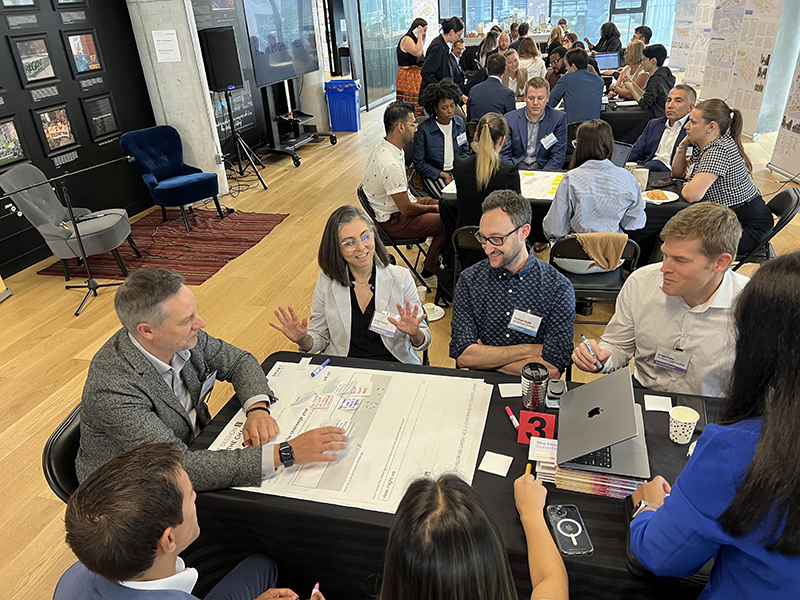
Last week, we had the pleasure of hosting a Solutions Lab that brought together some of the brightest minds in urban development, planning, and policy. The topic of the day: Developing Large-Scale Government-Owned Land. This is not just a timely subject, but one that represents a tremendous opportunity for reshaping our urban environments in ways that prioritize affordability, sustainability, and the public good.
We kicked off the day with a fireside chat featuring Vic Gupta, CEO of CreateTO, who set the stage for what would be an engaging and insightful series of discussions. Throughout the day, we were joined by representatives from major public and private organizations including CMHC, Canada Lands Corporation, Metrolinx, the Ministry of Municipal Affairs and Housing, Waterfront Toronto, City of Toronto, and many others. Together, we tackled some of the most pressing challenges facing large-scale developments today.

Why a Solutions Lab?
A Solutions Lab is not your typical conference or meeting. It’s a collaborative, hands-on format designed to bring together experts from multiple fields to address specific, complex challenges. In this case, we focused on the unique issues involved in developing government-owned land, an opportunity that allows us to think big, build communities, and create a lasting impact for generations to come. By bringing together planners, engineers, developers, government officials, and community leaders, we were able to generate fresh ideas, align on strategies, and identify actionable solutions.

Key Takeaways from the Lab
Here are some of the main insights that emerged from the day’s discussions:
Infrastructure Coordination: Aligning the development of infrastructure with financing models is crucial. Without adequate transit and servicing capacity, even the best-laid development plans can falter. Synchronizing infrastructure upgrades, transit access, and connectivity is essential for the long-term viability of these projects.
Political Stability and Stakeholder Alignment: Large-scale projects require political buy-in across multiple levels of government, but maintaining stability through political changes is often a challenge. We also need to manage diverse stakeholder interests, ensuring that public and private priorities are aligned early on.
Streamlined Approvals and Processes: Delays caused by slow, disjointed approvals are a major roadblock for development. The need to streamline processes and establish clear priorities—whether it’s affordability, heritage preservation, or environmental sustainability—was a consistent theme.
Financing and Affordability: One of the toughest challenges is securing sustainable financial models that address affordability without sacrificing design quality or innovation. The tension between cost management and the desire for high-quality, sustainable development is real, and finding solutions to bridge that gap will be key.
Effective Partnerships: Successful projects are those that balance public and private roles effectively. We discussed the need to clearly define partner roles, align priorities, and manage public expectations when it comes to the benefits of these projects.
Adaptability and Long-Term Vision: Large-scale developments require flexibility to adapt to changing economic and political conditions while maintaining a long-term vision. Balancing competing needs like affordability, green space, and community amenities without compromising on core goals is critical to the success of these projects.

Looking Forward
The success of this Solutions Lab has reaffirmed the need for continued collaboration and open dialogue between the public and private sectors. These large-scale developments are not only opportunities for growth, but also for addressing some of the most critical issues in housing, sustainability, and infrastructure.
As a firm, we are incredibly proud to have facilitated such a productive and insightful event. The conversations held in this room will undoubtedly help shape the future of large-scale government land development, and we look forward to continuing this work with our partners in the public and private sectors.
Finally, we’d like to thank all of our sponsors, partners, and, of course, our attendees for their contributions to making this event a success.
